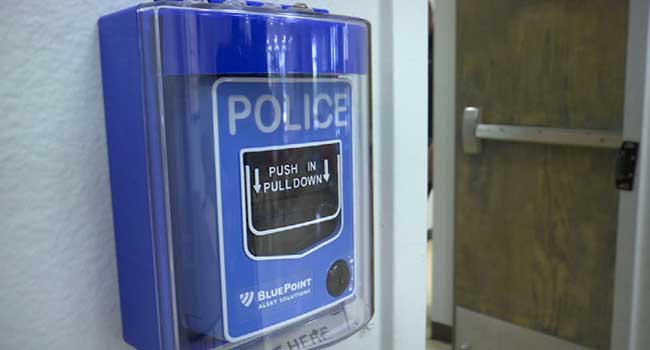
Illinois Schools Install Blue Emergency Boxes
Worried about gun violence, 20 Illinois schools install emergency boxes that notify police.
- By Sydny Shepard
- September 19, 2018
Schools in Illinois have installed bright blue emergency pull boxes marked, "Police" on the walls of their hallways. The fixtures, campus security professionals from the schools say, are to help students connect with first responders in the event of an active assailant.
More than 20 schools have installed the BluePoint alert systems, many in the Chicago suburbs. One of the schools, St. Benedict's Preparatory School on the North Side is training their students to use the pull stations, located throughout the campus if an unauthorized person with malicious intent gains access.
"[Students] really, sadly, are aware of this possibility," Rachel Gemo, head of school at St. Ben's said. "They are not immune to what they hear on TV."
Students, faculty, and staff can activate the system by removing a pull station's clear plastic cover, then pushing its lever in and then down. That sequence triggers a complex alert system, sending a signal to BluePoint and to police. Some school staffers can trigger the alert system using special fobs they wear around their necks, similar to car keys.
This year alone, close to 60 incidents of gunfire have taken place on U.S. school grounds, according to Everytown for Gun Safety, a nonprofit working to reduce U.S. gun violence. Not every incident results in injury or death, the organization notes, but these shootings can have a profound effect on children and teenagers.
"The effects of gun violence extend far beyond those struck by a bullet: gun violence shapes the lives of the millions of children who witness it, know someone who was shot, or live in fear of the next shooting," St. Ben's website says.
About the Author
Sydny Shepard is the Executive Editor of Campus Security & Life Safety.